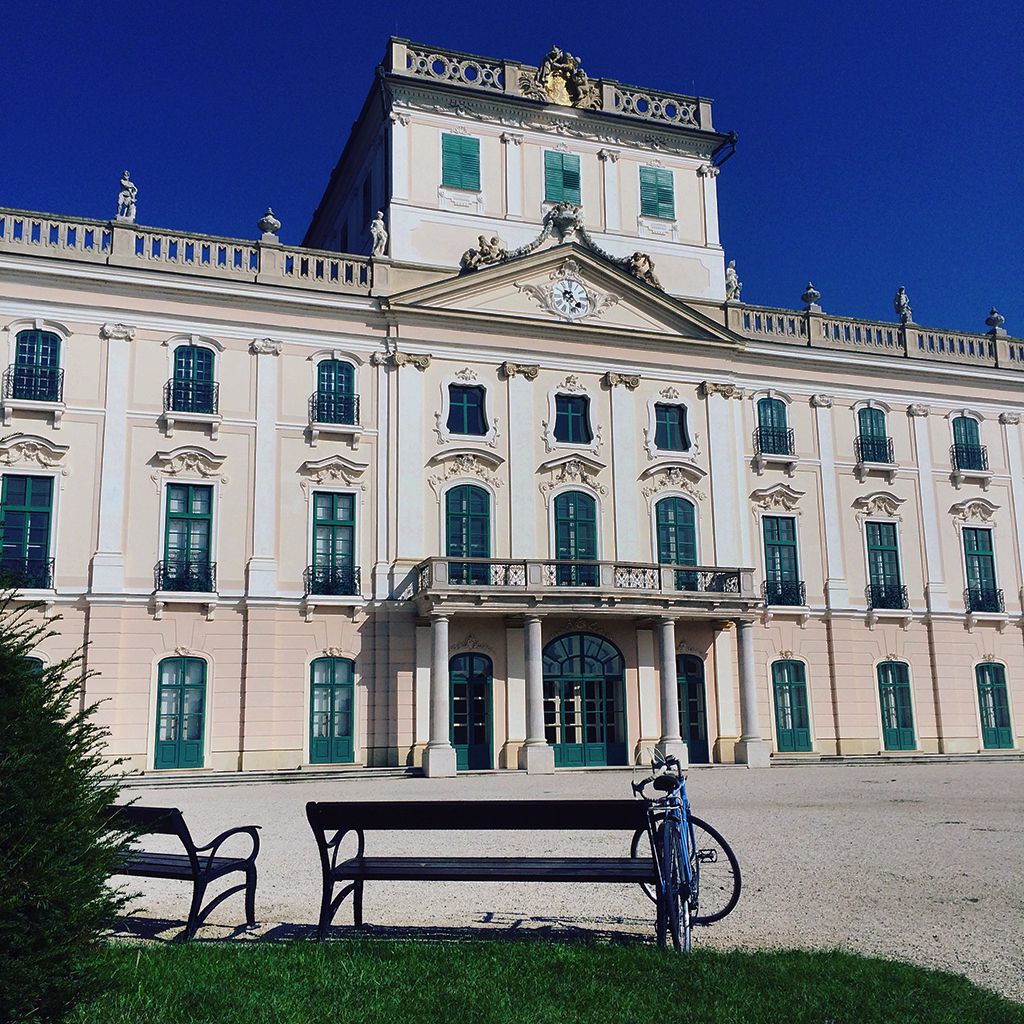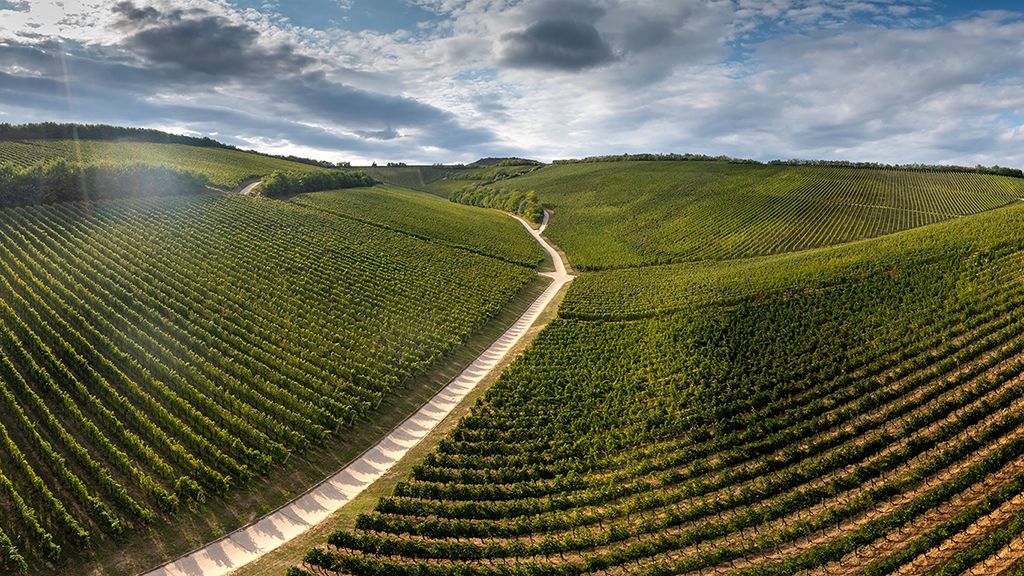 by Peter Illés on April 13th, 2023
by Peter Illés on April 13th, 2023
The Eurovelo 13 follows the bygone border of the Communist Bloc and is named rather unimaginatively the Iron Curtain trail. It is the third of the 4 different Eurovelo routes crossing Hungary (the others being EV6, EV11 and EV14, which we have all covered before).
To make it easier to follow, I'm going to break the route and sights into 3 sections:
EV13 enters Hungary through the cycling border near the tiny village of Fertőújlak, on the shore of the Neusiedlersee, or Lake Fertő as it is known in Hungary. It then follows the western and southern border of the country, crossing the border into Austria, Slovenia, Croatia and back again multiple times before leaving the land south of Szeged towards Serbia.
The first 40 kms follow the Lake Fertő circuit. After a short detour into Austria at Mörbisch-am-See, it loops around Sopron and exits the country again south of the city. This first Hungarian stretch follows bike paths and quiet B-roads. Although the elevation map won't show it, expect some short and steep climbs.
You'll then cycle the backroads of Austria for about 50 kms before entering Hungary again near Kőszeg. The road between Kőszeg and Szentgotthárd is 75 kms long, and it takes you along on beautiful roads with little traffic.
Entering Hungary, your first significant sight will be the Esterházy Castle in Fertőd. This baroque palace used to be the cultural centre of Hungary in the 18th century, with many art-related balls and festivals being organised by the Esterházy family. It is said that back in the day, it was a worthy counterpart to Schönbrunn or Versailles.
The EV13 circles Lake Fertő from the south, at some distance from the lake. However, the route takes you to the hills of the Sopron wine region, with many wineries open for a quick refreshment.
When in Fertőrákos, visit the quarry, where you can wander around in monumental chambers or even catch a show in the cave theatre.
Sopron is the largest town in the area which prides itself on a lovely old medieval centre where you easily spend a day.
The section between Sopron and Kőszeg wanders into Austria, taking you through the vineyards of the Burgenland wine region. Deutschkreuz and Nikitsch have a castle each. The former is home to the Anton Lemden art museum. It can be visited during a guided tour at pre-determined appointments. At the same time, the latter is closed off to the public and used mainly as an event venue.
Back in Hungary, Kőszeg is one of the country's most pleasant small towns, with many highlights. Check out the medieval old town, the Jurisics Fortress, the many churches, the synagogue and the Heroes' Tower.
A short detour to Szombathely may be worth your time if you're into larger towns. It has everything a larger town usually has: many churches, museums and even a lovely arboretum.
The road from Kőszeg to Szentgotthárd doesn't have any major sights. Instead, it takes you through further vineyards and quaint little Austrian villages. If you're into places with funny names, take a picture with the sign in Pornoapáti (please don't).
You won't have trouble finding a place to spend the night, with plenty of guesthouses and hotels along this stretch, the Lake Fertő, Sopron, Kőszeg or Burgenland.
Wild camping is possible and easy on the Hungarian side; avoid pitching your tent in the national park around Lake Fertő.
Arranged camping spots are available in Fertőrákos (Szent Kristóf Sátorszállás or Cák.
Major towns like Sopron, Szombathely and Kőszeg will have large shops such as Spar, Aldi or Lidl for grocery shopping and also bike shops for repairs (Google "kerékpárszervíz").
Sopron and Szombathely also have larger sporting goods stores, such as a Decathlon or Hervis shop.

The Esterhazy Castle in Fertőd.
From Szentgotthárd, the official EV13 route takes you directly into Slovenia. I have never ridden the Slovenian stretch. Although I am absolutely sure it is beautiful, I would still recommend you divert and follow my lead through the Őrség region of Hungary, one of the country's most beautiful parts.
The route I would recommend is Szentgotthárd - Farkasfa - Szalafő - Őriszentpéter - Magyarszombatfa - Nemesnép and then enter Slovenia near Kobilje. Here's the Komoot link of this route, which takes you on the quiet backroads of the Őrség.
After a short foray in Slovenia, you re-enter Hungary near Tornyiszentmiklós and almost immediately exit towards Croatia this time. You will be riding in Croatia for at least 130 kms until Virovitica.
Szentgotthárd is home two a sizeable baroque church which hosts western Hungary's largest bell. Next to the church, you'll find a Cistercian Abbey with a baroque garden, a great place to relax and rest for the upcoming kilometres.
Your next stop should be Szalafő, where you can visit the Pityerszeri skanzen, an open-air ethnographical museum and the wild game reserve, where you can meet some lovely bison. If that's not enough, you can find another exciting gem in the town centre, the ice pit, which was used to keep meat, beer and wine cool during the warm season.
Őriszentpéter boasts a 800-year-old church, and if you're up for a detour, Pankasz has a unique "skirted" bell tower, which is the symbol of the Őrség region.
Heading south along the Slovenian border, there is a series of villages, each with something interesting to check out. Magyarszombatfalva is home to 10 families of potters you can check out at work, while Velemér has another 800-year-old church, dating back to the time Hungarian first arrived in Pannonia. Last but not least, Szentgyörgyvölgy has a beautiful reformed church with a cassette ceiling painted with blue motifs.
There are plenty of guesthouses in and around the Őrség. Just Google "vendégház" if you're looking for one.
Csaliti Vendégház in Farkasfa is both a guesthouse and camping. You can even spend the night in a traditional Hungarian yurt! Another arranged camping place can be found in Őriszentpéter.
Most of the Őrség is a national park, so I wouldn't advise you to try wild camping here.
Szentgotthárd is by far the largest town in this area and the only place you'll find larger stores. It also has a Bike & Coffee place, where you can sip a 'cino while they mend your bike.
Most other towns and villages will have smaller grocery shops if you need a quick snack.
Since the Őrség is a favourite destination for hikers and tourists, you'll find plenty of great restaurants and inns for a hearty Hungarian meal.
In Virovitica, you'll have a choice to make. Stay in Croatia, which would be a mistake, or re-enter Hungary near Barcs. OK, that might be unfair, as the next 75 kms on the Hungarian side don't offer much in terms of sights, and both sides of the Drava River have great cycling paths.
If you decide to stay on the Croatian side, make sure you return at Donji Miholjac, as the Hungarian stretch between Villány and Mohács is a treat. It's mostly cycle paths, except for a short section between Bóly and Sátorhely. At Mohács, you intersect the EV6 and cross the Danube by ferry, then continue 90 kms until Tompa on the road with low traffic. At Tompa, you'll cross into Serbia to check out the lovely town of Subotica or Szabadka, as Hungarians call it.
Then it's back again in Hungary for another 50 kms to check out the university town of Szeged. This chunk of the EV13 on the Hungarian side is entirely on nicely arranged cycle paths. You will leave Hungary, this time for good, just south of Szeged after crossing the Tisza.
If you choose to cycle on the Hungarian side of the Drava, don't miss the oxbow lake formed on the Ancient Drava. There's a visitor centre with exhibits and a petting zoo in the tiny village of Szaporca.
Hungary is the land of thermal baths, with a spa in every second city. So I rarely even mention them. But the one in Harkány is worth checking out. It has indoor and outdoor facilities, and slides and the water here has excellent benefits for people with locomotor disorders. Unfortunately, I doubt that it helps your saddle fatigue, though.
Pécs is just 35 kms away from the Eurovelo 13, and you should take this detour. Between the beautiful old town with the cathedral and mosque, the Zsolnay quarter and the nearby Mecsek mountains, it's easy to spend 2 or 3 days here.
Back on the Eurovelo trail and after Harkány, you enter the Villány wine region cycle path, which takes you through one of the country's premier wine regions. Take your time and go for a wine tasting and explore the excellent full-bodied red wines (white and rosé are also available).
Villány is not all wine, though. Don't miss the 800 years old Siklós Castle with its still intact walls. While the outer walls have survived the test of time, the interior buildings are a testament to the constant changes of masters and rulers. Don't miss the djami, just outside the castle.
Other sights include the statue park in Nagyharsány and the old cellar rows in Villánykövesd and Palkonya. The latter is just a couple of kms detour from the official route, but well worth the effort.

Ride between the vineyards in Villány.
Leaving Villány behind, you can visit the 19th-century classicist Batthyány-Montenuovo castle in Bóly or the Mohács battle memorial outside Sátorhely. The Battle of Mohács in 1526 was a painful moment in Hungarian history, leading to two centuries of Ottoman rule.
After the memorial, you'll arrive in Mohács proper, home to the famous Busójárás festival during February, when young locals dressed up in fur coats and wooden mask attempt to scare away the winter. If, however, you're visiting in the warmer months, it still has plenty to offer for a couple of hours-long walk around town.
Subotica, or Szabadka, used to belong to Hungary (or the Hungarian parts of the Austro-Hungarian and Habsburg Empires) until the Treaty of Trianon in 1918. It's still predominantly populated by Hungarians. It's an excellent town for sightseeing with many interesting architectural sights, especially in the secessionist style. Don't miss Lake Palić, a popular recreational spot for locals.
Back in Hungary, you'll pass through Mórahalom (it has a spa!) and then enter Szeged, one of Hungary's major university towns. It also boasts many sights, including the Votive Church, the surrounding square, and the secessionist Reök Palace. Walk along the Tisza River and finish your day with a Szeged-style fish soup, the Szegedi Halászlé. Oh, and Szeged also has a spa!
Guesthouses and hotels are easiest to find in large towns like Pécs, Mohács, Subotica or Szeged. The Villány wine region also has plenty of bed-and-breakfast-style guesthouses.
Wild camping is possible along the Drava (avoid protected areas) and this whole stretch, except in proximity or in larger towns.
There are arranged campings in Sellye, Harkány, Pécs, Dávod, Subotica and Szeged.
Getting supplies is trickier during the first part of this stretch before Villány. Barcs is the largest town, with several grocery stores. After Barcs, only expect smaller grocery stores or bakeries until Harkány. From there, you'll ride through tourist-frequented places and larger towns.
Barcs also has a bike shop called Biciklion. Other bike shops are available in major towns like Pécs, Mohács, Subotica or Szeged.
Pécs and Szeged also have large sporting goods stores like Decathlon or Hervis.